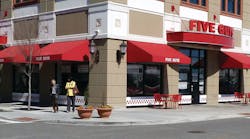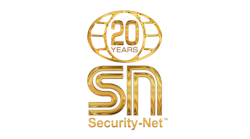Providing security for facilities with multiple locations can be complicated. Often faced with numerous challenges that extend beyond technology and standardization with a single solution platform, those providing security at multiple locations must address company culture, budget issues and how to future-proof technology.
Many different elements need to be taken into consideration when it comes to providing security at multi-site facilities. Advancements in security technologies and higher expectations being placed on corporate security professionals also have an impact.
The multi-facility security task can be very daunting: Coordinate a security program that spans dozens — sometimes hundreds — of locations across North America. What’s a corporate security director to do? Here are some guidelines on how to assess the situation and tackle the task.
The Value of Standardization
Should your company standardize on the types of security systems it deploys? This is perhaps one of the biggest questions security directors are faced with today. Several years ago, it was fairly common for companies to have one brand of access control system for an office in Omaha, Neb., but yet another type of access control system for the office in Los Angeles. It was not uncommon for a company to allow the decision making process to be made at the local level. As a result, a local office or security manager would hire the local systems integrator, who installs their own preferred line of products. This ends up creating a disjointed security system with incompatible systems across multiple locations.
In recent years, large companies have been standardizing on the equipment they install and beginning the migration to a single solution for video and access control systems. The reason is simple: Taking a standardized approach can lower the overall cost of a system because of the volume of product purchased. As you purchase more products, the less expensive it should be. Also, installing the same brand of access control system across multiple locations enables single-card access for salespeople and senior management who may travel to several locations. This also eliminates the need to carry and keep track of multiple access control cards.
Taking a single approach on an access control system also provides the corporate security director with the ability to manage employee access privileges through a single interface, instead of needing to make multiple changes on several different systems. Obviously, it is easier to review data and security issues on a corporate level when running a single report instead of having to review multiple reports. And, when a manufacturer upgrades access control software, the upgrade and new features can be implemented company-wide.
Rural Office vs. City Office Mentality
There have been two schools of thought on how to provide security for an office located in a rural area vs. an office in a large city. Generally, the prevailing opinion in the smaller field office is that security is not a necessity. The crime rate may be low in the area, or there are very few employees coming and going from the building compared to the home office in a large, metropolitan area. But security, even at an outlying facility, is extremely important — remember that security is not just about protecting assets, but also about protecting the corporate brand and providing liability protection.
When a corporate office establishes security standards based on risk, it can help a smaller field office understand the overall need for security that goes beyond an intrusion system and eliminate the feeling that Big Brother is watching. One example would be a standard for data room security, so that every data room or closet has a card reader and a surveillance camera associated with it. Another scenario could be that every perimeter door has a card reader, a surveillance camera and an intercom system. By specifically listing the security requirements for such locations, corporations can help ensure a security program is accepted and implemented.
As with most things in life, multi-facility security is not 100-percent cut-and-dry. There are times when a corporation might want to adopt more flexible security rules for a rural office whose employees don’t want the front door locked all day like at the corporate office. A corporation might need to adapt a little more to local needs, such as allowing entrance and exit for courtyard areas without requiring card access.
Minding the Budget
Cash is king, and security directors worry that the more devices, software and other equipment they deploy, the more expensive and complicated the security program will become. While it is true that properly implementing a security program is not cheap, there are many cost saving measures that some corporate security directors might overlook.
Taking a standardized approach to all systems enables a company to centrally manage and monitor data — whether from the surveillance or access control system. As a result, it becomes less expensive to have one or two people head up this responsibility on a company-wide basis instead of having one person manage security at each individual location. Having an office manager maintain the access control system and access privileges can prove more costly than having a single person manage this function on a daily basis who knows the system inside and out.
Companies can also save money on software licensing agreements by standardizing on a single solution. The more products and software you buy, the better the pricing. Security directors can also expect better support from their manufacturer and systems integrator partner.
Additionally, it is common for companies with large-scale deployments of technology — for example, a video management or access control system — to get an inside scoop from the manufacturer on new features and how the equipment will evolve in the future. If your company has a dozen different video management solutions and physical access control systems, that information may not come as quickly. Having this information obviously helps a security director plan for future programs.
Future-Proofing
Future-proofing may be one of the biggest buzzwords in the security industry, as security directors look to ensure that the security products they deploy today will remain relevant in two years, five years or more. This becomes a critical topic in a multi-facility deployment to ensure that budgets are spent wisely and the ability to upgrade systems as the industry introduces new technology is available.
Manufacturers are listening to their customers about the need to future-proof security systems and as a result have created NVRs and video management systems that can operate with both IP-based and analog-based surveillance cameras. This enables end-users to take a strategic approach to upgrades and ensure that the investment they make in security systems today still has value in five years or more.
As a corporate security director, it’s important to make sure that you are implementing security systems that can either be upgraded in the future by downloading new software or that have a long-standing reputation in the security market. The last thing a security director wants is a newly installed access control system to become outdated or unsupported after only a few years.
Joe Liguori is the president of the Board of Directors of Security-Net, a global provider of security integration services. Security-Net is comprised of 50 regional offices and 1,500 dedicated, security professionals positioned across the United States, Canada and abroad.




